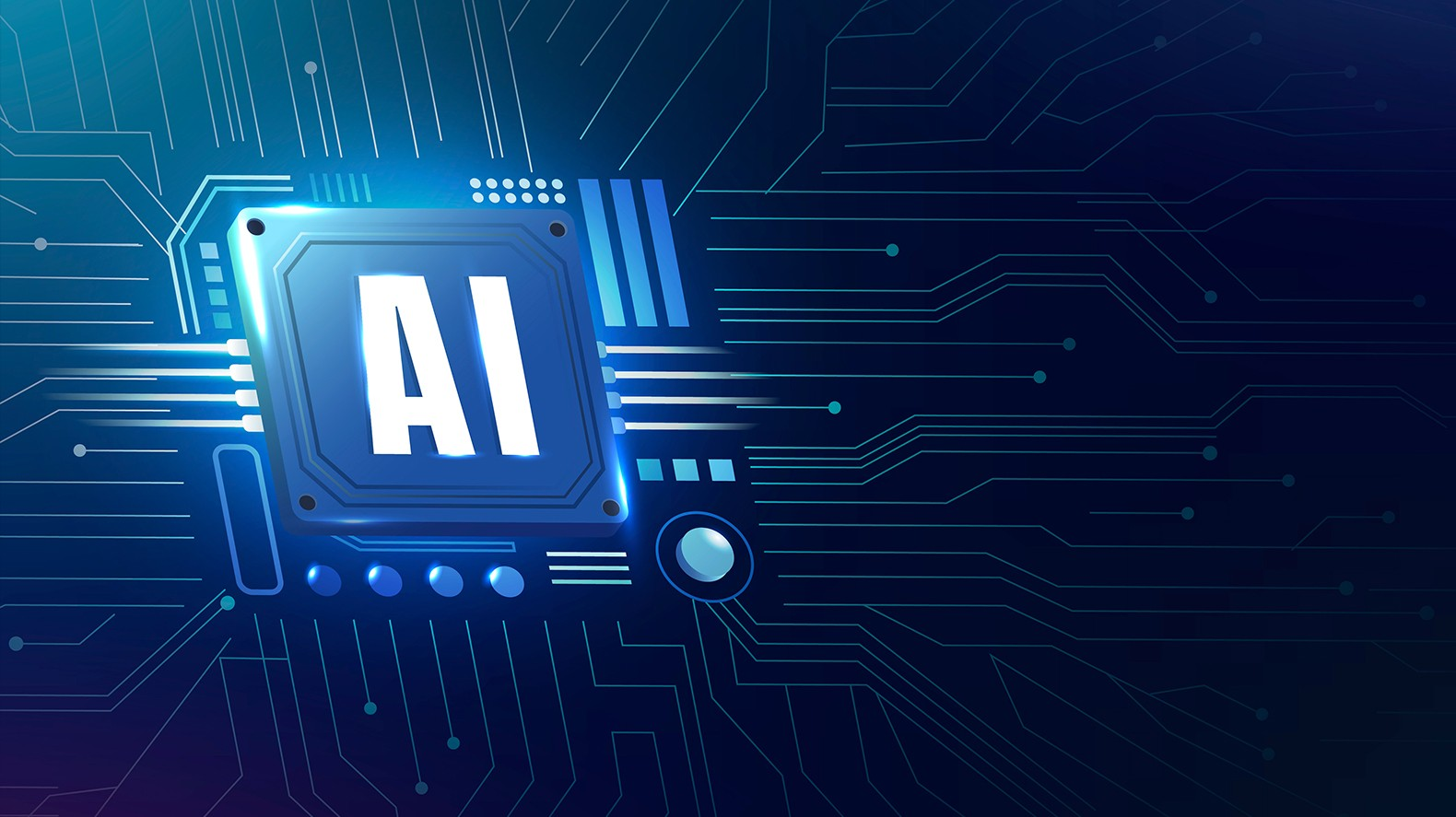Top AI Programming Languages

Artificial intelligence (AI) has rapidly evolved, revolutionizing industries and reshaping our world. At the core of this technological advancement lies programming, the art through which humans communicate with machines. However, not all programming languages are created equal when it comes to AI development. This article delves into the top AI programming languages, examining their features, limitations, and ideal use cases.
Python: The Undisputed Champion of AI
Python's supremacy in the AI space is readily apparent. Its simplicity, readability, and rich libraries have helped create a strong development community. NumPy, a fundamental package, provides efficient numerical operations essential for scientific computing. Researchers may gain valuable insights by utilizing Pandas' sophisticated data manipulation and analysis capabilities.
Additionally, Scikit-learn is a flexible machine-learning library. It allows programmers to use a wide variety of methods, including clustering, model selection, regression, and classification. Further, TensorFlow, a behemoth in the deep learning domain, provides a flexible platform for building and training complex neural networks. Its ability to handle large-scale datasets and distribute computations across multiple devices has made it a cornerstone of cutting-edge AI research.
While Python's strengths are numerous, its performance limitations in computationally intensive tasks cannot be ignored. The Global Interpreter Lock (GIL) can hinder multi-threading, affecting the execution speed of certain algorithms. However, for many AI projects, Python's rapid development cycle, extensive community support, and rich ecosystem outweigh these performance considerations.
R: Statistical Powerhouse for AI
R, with its statistical roots, has carved a niche in the AI domain for tasks requiring in-depth data exploration and visualization. Its grammar-like syntax, although unfamiliar to some, provides a natural way to express statistical computations. Packages like dplyr and tidyr facilitate data manipulation with elegance, while ggplot2 offers unparalleled flexibility for creating informative and visually appealing graphics.
Additionally, Caret offers a uniform interface for training and assessing different models. Caret is a complete machine-learning package. R's strengths lie in its statistical modeling capabilities, making it a preferred choice for tasks like hypothesis testing, time series analysis, and survival analysis. However, R's performance compared to compiled languages like C++ can be a bottleneck for large-scale AI applications.
Java: Robust and Scalable for Enterprise AI
Java is a good option for creating enterprise-grade AI systems because of its reputation for stability, scalability, and platform independence. Its strong typing and garbage collection contribute to code reliability, while its extensive standard library provides a solid foundation for building complex applications.
Deeplearning4j, a Java-based deep learning framework, offers distributed computing capabilities and integration with Hadoop for handling big data. Furthermore, Weka, a prominent Java library, offers a set of machine-learning algorithms for data mining.
While Java's strengths are undeniable, its verbosity and slower development cycle compared to Python can be perceived as drawbacks. Additionally, its performance might not be optimal for highly demanding AI workloads, such as real-time image or speech processing.
C++: Performance-Oriented AI
C++ is renowned for its performance and control over system resources. It is the language of choice for AI applications demanding high speed and efficiency. Its ability to manipulate memory directly and optimize code at the assembly level is crucial for tasks like real-time computer vision, natural language processing, and robotics.
OpenCV, a popular computer vision toolkit, provides a C++ interface for image and video processing. TensorFlow Lite, a lightweight version of TensorFlow, provides C++ APIs for deploying machine learning models on embedded devices.
Despite its performance advantages, C++'s complexity and steep learning curve can be daunting for developers without a strong C or C++ background. Moreover, the risk of memory leaks and segmentation faults requires careful programming practices.
JavaScript: AI in the Browser
JavaScript, which was hitherto only associated with web development, is now being utilized for artificial intelligence. Frameworks like TensorFlow.js enable developers to create machine learning models that run directly in the browser, opening up possibilities for real-time applications and edge computing. Node.js, the JavaScript runtime, also supports server-side AI development.
Although JavaScript offers convenience for browser-based AI, its performance limitations compared to compiled languages might hinder computationally intensive tasks. Moreover, the evolving nature of JavaScript and its ecosystem can pose challenges for maintaining code consistency.
Julia: High-Performance Technical Computing
Julia, a relatively young language, has garnered attention for its blend of speed, ease of use, and powerful features. Its ability to seamlessly transition between interpreted and compiled modes, combined with its rich ecosystem of packages for scientific computing and machine learning, makes it an attractive option for AI development.
Despite its potential, Julia's maturity and community size are still growing compared to established languages like Python and R. At the same time, its performance is impressive; it might not match the raw speed of languages like C++.
Lisp: The Grandfather of AI
Lisp, one of the earliest programming languages, is significant in the development of artificial intelligence. Its symbolic nature and ability to represent complex data structures make it well-suited for tasks like knowledge representation and natural language processing. Lisp-based frameworks like Common Lisp and Clojure offer modern implementations with improved performance and features.
Although there is no denying Lisp's history, beginners may find its syntax and learning curve difficult. Moreover, its niche popularity compared to mainstream languages might limit access to libraries and community support.
Scala: Functional Programming for AI
Scala, combining object-oriented and functional programming paradigms, offers a unique approach to AI development. Its compact syntax, powerful type system, and easy interface with the Java environment make it an appealing option for developing scalable and maintainable AI systems. Libraries like Spark and Deeplearning4j provide support for big data processing and deep learning.
However, Scala's learning curve can be steeper than Python or R, and its functional programming concepts might require a paradigm shift for some developers. Additionally, while Scala offers performance benefits, it might not match the raw speed of languages like C++ for highly optimized AI workloads.
Kotlin: Modern AI Development with Android Compatibility
Modern Java Virtual Machine-based languages like Kotlin are becoming more and more popular for developing Android apps and are being used for AI applications. It is a useful option for creating AI applications because of its short syntax, null safety, and Java compatibility. Libraries like TensorFlow Kotlin and Deeplearning4j Kotlin provide support for AI development.
While Kotlin is a relatively new language in the AI landscape, its growing community and ecosystem are promising. However, its performance might not be as adjusted for computationally demanding applications as languages like Julia or C++.
Swift: AI on Apple Platforms
Swift, developed by Apple for iOS, macOS, watchOS, and tvOS, has expanded its capabilities to include AI development. Its focus on safety, performance, and interoperability with Objective-C makes it a suitable option for building AI applications on Apple platforms. Frameworks like Core ML and Create ML provide tools for deploying and training machine learning models.
While Swift is a powerful language, its ecosystem for AI development is still maturing compared to languages like Python and R. Additionally, its focus on Apple platforms limits its versatility for cross-platform AI projects.
How does AI-assisted Programming Change the Industry?
By enhancing human talents and automating repetitive tasks, AI-assisted programming is completely changing the software development industry.
Here's how it's transforming the industry:
Increased Productivity and Efficiency
Automation of Repetitive Tasks: AI can generate boilerplate code, perform unit testing, and handle other mundane tasks, freeing up developers to focus on complex problem-solving and innovation.
Faster Development Cycles: AI may greatly speed up software development by automating repetitive operations and optimizing code, resulting in a quicker time to market for software solutions.
Improved Code Quality and Reliability
Error Detection and Prevention: AI can analyze code for potential errors, vulnerabilities, and inefficiencies, leading to more robust and secure software.
Code Optimization: AI can suggest improvements to code structure, algorithms, and data structures, resulting in optimized performance and resource utilization.
Democratization of Programming
Lowering the Barrier to Entry: AI-powered tools can assist individuals with limited programming experience in creating software applications, expanding the pool of potential developers.
Accelerated Learning: AI can provide real-time feedback and suggestions, helping developers learn new programming languages and concepts more quickly.
Enhanced Creativity and Innovation
Focus on High-Level Problem-Solving: AI helps software engineers focus on the creative parts of software development by automating repetitive processes, resulting in more inventive solutions.
Exploration of New Possibilities: AI can help developers explore different approaches to problem-solving by suggesting alternative solutions and code patterns.
Challenges and Considerations
While AI-assisted programming offers significant benefits, it's important to address potential challenges:
Job Displacement: There are worries that AI-powered technologies may replace programming jobs. But rather than replacing human talents, it's more probable that AI will enhance them.
Dependency on AI: An excessive dependence on code created by AI may result in a lack of comprehension of the underlying logic and possible vulnerabilities.
Ethical Considerations: AI-powered tools must be developed and used ethically to avoid biases and unintended consequences.
Overall, AI-assisted programming is poised to transform the software development industry by increasing productivity, improving code quality, and democratizing access to programming. As the technology continues to evolve, it's essential to strike a balance between human ingenuity and AI capabilities to harness the full potential of this powerful combination.
Why Specific Programming Languages are Essential
Python has become an indispensable tool in the modern programming landscape. Because of its readability and simplicity, both novice and experienced developers may use it. An ecosystem of tools and frameworks that supports everything from machine learning and artificial intelligence to web development and data research further strengthens this adaptability.
Java, known for its platform independence, has solidified its position as a cornerstone of enterprise software development. Its robust nature and emphasis on security make it suitable for handling complex and critical systems. The ability to run Java applications across different platforms without recompilation has significantly contributed to its widespread adoption.
JavaScript's dominance in web development is undeniable. It powers the interactive elements and dynamic behavior of modern websites. Thanks to Node.js, JavaScript can now be used for server-side programming, making it possible to create full-stack apps with only one language. This versatility has expanded JavaScript's influence beyond the browser into domains like game development and mobile app development.
C++ provides unrivaled performance and low-level control, making it the preferred language for systems programming, game creation, and real-time applications. Its efficiency in optimizing code for specific hardware architectures is crucial for demanding tasks. Many other programming languages, such as C# and Java, owe their foundations to C++.
R has become the de facto language for data analysis and statistical computation. Its robust package ecosystem offers strong capabilities for exploring, manipulating, and modeling data. The role of language in machine learning and data science has solidified its position as an essential tool for researchers and data scientists.
Choosing the Right Language for Your AI Needs
Selecting the appropriate programming language for your AI project depends on various factors, including the project's goals, the size and complexity of the dataset, the desired performance, and the team's expertise.
Python, with its versatility and extensive ecosystem, remains a strong contender for a wide range of AI projects. R excels in statistical analysis and data visualization, making it suitable for tasks involving exploratory data analysis and machine learning model evaluation. Java's robustness and scalability make it a solid choice for enterprise AI applications. C++ offers unmatched performance for computationally intensive tasks, while JavaScript shines for browser-based AI and edge computing. Julia, Lisp, Scala, Kotlin, and Swift each bring unique strengths and considerations to the table.
As AI continues to evolve, so too will the landscape of programming languages. Stay informed about emerging technologies and trends to make informed decisions about the tools you use to build the future of artificial intelligence.
Ultimately, the best language is the one that aligns with your project requirements and your team's skills. Experimentation and evaluation are crucial in determining the optimal language for your AI endeavors.
